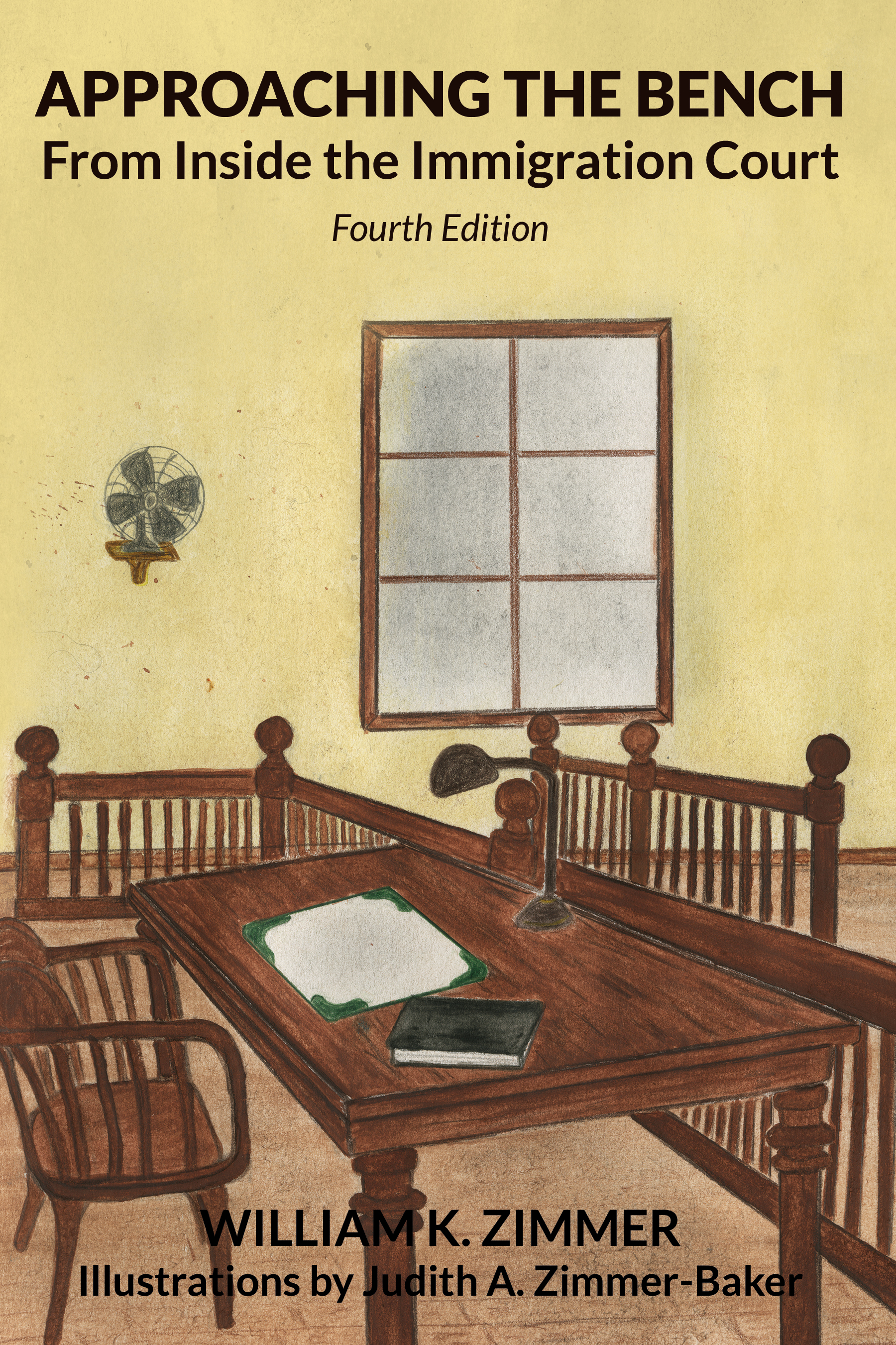Reinstated Removal Order Bars Consideration of Cancellation of Removal For Battered Spouses

The procedural history, facts of record, holding and rationale in Pardeep Kumar v. Garland (September 21, 2022) No. 20-60712 are as follows:
Case History
The former Immigration and Naturalization Service (“INS”) apprehended the Petitioner, ordered her removed and removed her to Mexico.
Subsequently, the Department of Homeland Security (“DHS”) reinstated the Petitioner’s removal order.
The Petitioner then applied for cancellation of removal and withholding of removal and protection under the Convention Against Torture (“CAT”).
An Immigration Judge denied the Petitioner’s applications for cancellation of removal and withholding of removal.
The Petitioner appealed the denial of her applications to the Board of Immigration Appeals (“BIA”).
The BIA dismissed the Petitioner’s appeal.
The Petitioner then filed a petitioner for review of the BIA’s decision.
Facts
- The Petitioner is a citizen of Mexico, who first came to the United States in 1999.
- At that time, she gave immigration officers a false name and she was returned to Mexico.
- The next day, the Petitioner returned to the border and told immigration officers she was an American citizen.
- The INS charged her with “Attempted Illegal Entry by False and Misleading Representation” to which she pleaded guilty, and a federal court sentenced her to 75 days’ imprisonment.
- The INS ordered Petitioner removed and, after her incarceration, it removed her to Mexico.
- Two years later, the Petitioner illegally entered the United States and settled with her husband, a lawful permanent U.S. resident, and oldest son near San Antonio, Texas where they lived there together for about seven years and had two more children.
- The Petitioner alleged that she and her children endured serious abuse from her husband primarily in the United States, and in one incident of abuse her youngest son had suffered a serious injury.
- Concluding that she was eligible for reinstatement because she was an “alien who has illegally reentered the United States after having previously been removed,” the DHS reinstated the Petitioner’s removal order.
- The Petitioner did not contest the reinstatement of her removal order, but applied for applied for cancellation of removal under the “[s]pecial rule for battered spouse[s]” under section 240A(b)(2)(A) of the Immigration and Nationality Act, as amended (“the Act”), withholding of removal under section 241(b)(3) of the Act and protection under CAT.
- The Immigration Judge concluded that he lacked jurisdiction to consider the Petitioner’s application for cancellation of removal an denied the withholding of removal and CAT applications.
- The Petitioner appealed the Immigration Judge’s decision to the BIA, arguing that her application for cancellation of removal should be construed as a reapplication for admission to the United States.
- The BIA agreed with the Immigration Judge that he lacked jurisdiction to consider the Petitioner’s application for cancellation of removal and dismissed the appeal. However, the BIA reasoned that the Petitioner is ineligible to apply for cancellation of removal because the Act forbids an alien subject to a reinstated removal order to receive any immigration “relief.”
- The BIA also concluded that the facts supported denial of the Petitioner’s applications for withholding of removal and CAT protection.
Held
Petition for review DENIED
Rationale
The Petitioner did not challenge her reinstatement order. Rather, she asserted that the BIA legally erred in deciding that she was ineligible for cancellation of removal.
In particular, the Petitioner argued that:
- A 2006 amendment relating to the Violence Against Women Act of 1994 (“VAWA”) creates an exception to the general rule by providing the Attorney General with continued authority to have “discretion to consent to an alien’s reapplication for admission after a previous order of removal, deportation, or exclusion.” See Act of Jan. 5, 2006, P.L. 109-162, Title VIII, § 813(b), 119 Stat. 2960. Therefore, in spite of the reinstated removal order, the Petitioner remains eligible to apply for cancellation of removal as a battered spouse.
- Section 212(a)(9)(C)(iii) of the Act which provides a waiver of unlawful presence for an alien who is a VAWA self-petitioner permits an Immigration Judge to consider a VAWA cancellation of removal application.
The Fifth Circuit Court of Appeal reasoned as follows:
Governing Law
- Reinstatement, under section 241(a)(5) of the Act, is couched in absolute terminology:
“If . . . an alien has reentered the United States illegally after having been removed . . . , the alien is not eligible and may not apply for any relief under this chapter.”
- Section 241(a)(5) of the Act is a “statutory limit” on “possible relief from a removal order.” Ramirez-Mejia v. Lynch, 794 F.3d 485, at 490 (5th Cir. 2015).
- Neither statute cited by the Petitioner contains rights-creating language that could override the reinstatement statute’s blanket prohibition.
2006 VAWA Amendment
- The 2006 amendment did nothing new, but merely notes that executive officials “continue to have discretion” to grant relief. See Act of Jan. 5, 2006, P.L. 109-162, Title VIII, § 813(b), 119 Stat. 2960.
- The purpose of the 2006 amendment is to expand the definition of exceptional circumstances to include extreme domestic abuse to justify failure to appear at an immigration hearing. See section 240(b)(7) of the Act.
- In other words, the 2006 amendment provides that subsequent to an in absentia order (i.e. an order issued by an Immigration Judge in the absence of the individual whom the federal government is seeking to remove, deport or exclude from the United States) immigration officials “continue to have discretion” to consider his application.
- The 2006 amendment says nothing about what happens after a removal order is reinstated.
Waiver of Unlawful Presence
- Section 212(a)(9)(C)(iii) of the Act provides a waiver for a qualified VAWA self-petitioner who is “ineligible to receive visas and ineligible to be admitted to the United States” if such self-petitioner “has been ordered removed” and then “enters or attempts to reenter the United States without being admitted.”
- “VAWA self-petitioner” is a defined term, and it relates to aliens who qualify for relief under seven specific statutes. However, cancellation of removal is not specified. See section 101(a)(51)(A)-(G) of the Act.
- Furthermore, section 212(a)(9)(C)(iii) of the Act only provides ultimate discretion to grant or deny relief, even for an applicant who satisfies the statutory criteria. With or without the special rule for battered spouses, the same discretionary authority resides with the executive immigration authorities.
- The fact that all the statutes under consideration involve the exercise of executive discretion eliminates any possible inference that the only limitations on cancellation of removal are contained in the cancellation of removal statute. See Ramirez-Mejia v. Lynch, 794 F.3d at 490.
Reinstatement
- The reinstatement statute leaves no discretion. Once an alien satisfies the criteria for reinstatement, the order “is reinstated,” the alien “is not eligible and may not apply for any relief,” and the alien “shall be removed.” See section 241(a)(5) of the Act [emphasis added]. See section 241(a)(5) of the Act.
- The mandatory language of section 241(a)(5) of the Act applies to all aliens who have “reentered the United States illegally after having been removed” which includes the Petitioner, as she has conceded.
- Therefore, the reinstatement statute governs the Petitioner’s access to relief from removal.
Cancellation of Removal as a Form of Relief
- Relief is defined in fifth circuit case law as “any redress or benefit provided by a court.” See Ramirez-Mejia v. Lynch, 794 F.3d at 489.
- Cancellation of removal is a permanent form of redress or benefit that not only prevents removal from going forward, but it also prevents re-initiation of removal.
- Therefore, based on Ramirez-Mejia v. Lynch, cancellation of removal is properly classified as “relief” within the scope of the reinstatement statute.
- Accordingly, cancellation of removal is a form of “relief” unavailable to aliens who are subject to reinstatement orders under section 241(a)(5) of the Act.
Commentary
In Hortencia Ruiz-Perez v. Garland (September 30, 2022) No. 20-61133, the Fifth Circuit Court of Appeal affirmatively declared that special rule cancellation of removal for battered spouses under 240A(b)(2)(A) of the Act is “relief” within the meaning of the mandatory bar to relief described in section 241(a)(5) of the Act and nothing in the VAWA amendments to cancellation of removal or the waiver of unlawful presence under section 212(a)(9)(iii) of the Act for VAWA self-petitioners creates an exception to the mandatory bar.
In addition, the Fifth Circuit Court of Appeal cited two United States Supreme Court decisions and announced very clearly in obiter dictum (i.e. legalese literally meaning in Latin "other things said") outside the scope of the legal questions presented for its review that it is ready to consider changing its precedent determinations relating to appellate jurisdiction involving orders denying withholding of removal under section 241(b)(3) of the Act and CAT applications. Johnson v. Guzman Chavez, 141 S. Ct. 2271, at 2285 (2021) (Withholding of removal orders are not “final order[s] of removal” because granting withholding of removal leaves a removal order “in full force.”); Nasrallah v. Barr, 140 S. Ct. 1683, at 1691 (2020) (An order denying CAT protection is not a “final order of removal because it is not an order ‘concluding that the alien is deportable or ordering deportation.’”). See section 101(a)(47)(A) of the Act.
As a matter of law, obiter dictum is not precedential, but in the context of Hortencia Ruiz-Perez v. Garland the Fifth Circuit Court of Appeal clearly revealed how it is likely to rule.
The predicted change of statutory interpretation announced by the Fifth Circuit Court of Appeal will further restrict its jurisdiction to review reinstatement orders under section 241(a)(5) of the Act by requiring the timely filing of a petition “not later than 30 days after the date of the final order of removal.” See section 242(b)(1) of the Act.
Currently, based on Fifth Circuit precedent, an order of reinstatement is not final until an application for withholding of removal or CAT protection is decided. Ponce-Osorio v. Johnson, 824 F.3d 502, at 505–07 (5th Cir. 2016) (per curiam).
In most circumstances, more than 30 days will pass after an order of reinstatement is issued before a litigant is able to apply for and obtain a decision relating to withholding of removal and CAT protection.
Reinstatement of Removal Orders
Perhaps, review of reinstatement of exclusion, deportation and removal orders in the context of immigration law which has expanded in scope over time will be helpful to some readers.
Section 241(a)(5) of the Immigration and Nationality Act, as amended (“the Act”) is brief enough to cite in its entirety:
If the Attorney General finds that an alien has reentered the United States illegally after having been removed or having departed voluntarily under an order of removal, the prior order of removal is reinstated from its original date and is not subject to being reopened or reviewed, the alien is not eligible and may not apply for any relief under this Act, and the alien shall be removed under the prior order at any time after the reentry.
The immediate predecessor of section 241(a)(5) of the Act is section 242(f) of the Immigration and Nationality Act of 1952 (“the 1952 Act”).
Section 242(f) of the 1952 Act narrowly targeted specific classes of aliens for reinstatement of deportation or exclusion orders, who illegally reentered the United States after deportation or exclusion. These classes of aliens were defined under paragraphs of section 241(a) of the 1952 Act:
- (4) persons convicted for crimes involving moral turpitude;
- (5) violators of the Alien Registration Act of 1940;
- (6) alien anarchists communists and subversives;
- (7) persons seeking to engage in activities prejudicial to public interest, dangerous United States welfare, safety or security, and activities in violation of laws relating to espionage, sabotage, public disorder, and subversive to national security;
- (11) drug addicts and traffickers;
- (12) prostitutes and persons who engage in organized prostitution and commercialized vice;
- (14) persons convicted for firearms violations;
- (15) persons convicted for violating title I of the Alien Registration Act of 1940;
- (16) persons with multiple convictions for violating title I of the Alien Registration Act of 1940;
- (17) generally, persons convicted for violations of neutrality, interference with foreign commerce and espionage; and
- (18) persons convicted for importing any alien for prostitution.
Congress broadened the scope of reinstatement of previous removal orders by replacing section 242(f) of the 1952 Act with section 241(a)(5) of the Act in the Illegal Immigration Reform and Immigrant Responsibility Act of 1996 (“IIRIRA”) enacted on September 30, 1996.
In particular, section 241(a)(5) of the Act, unlike section 242(f) of the 1952 Act, is not limited to specific classes of illegal reentrants, but applies to all illegal reentrants who illegally reenter the United States after a final removal order is enforced. It seems reasonable to project, therefore, that more aliens who become subject to a reinstated removal order might be eligible to file relief applications if they can avoid the bar to relief imposed by section 241(a)(5) of the Act.
Prior to the September 30, 1996 enactment of IIRIRA, a reinstated deportation order under section 242(f) of the 1952 Act could be challenged by collaterally attacking the original deportation order under a “gross miscarriage of justice” standard. Enforcement of a deportation or exclusion order constituted a gross miscarriage of justice only if the order clearly could not have withstood judicial scrutiny under the law in effect at the time of issuance or execution.
The Board of Immigration Appeals (“BIA”) published the following cases addressing the gross miscarriage of justice standard relating to application of section 242(f) of the 1952 Act:
- Matter of Malone, 11 I&N Dec. 730, at 731-32 (BIA 1966) (Collateral attack on a deportation order warranted when the finding of deportability was not in accord with the law as interpreted at that time and resulted in a gross miscarriage of justice).
- Matter of Farinas, 12 I&N Dec. 467, at 471-72 (BIA 1967) (A gross miscarriage of justice occurred where an alien was ordered deported and the decision could not have withstood judicial attack under the interpretation of prevailing law.).
- Matter of Roman, 19 I&N Dec. 855, at 856-57 (BIA 1988) (An alien may collaterally attack a final order of exclusion or deportation in a subsequent deportation proceeding only upon showing that the prior order resulted in a gross miscarriage of justice.).
In addition, the BIA held that the Immigration Judge and the BIA lack jurisdiction to review a decision of the Immigration and Naturalization Service ("INS") to reinstate a prior order of removal pursuant to section 241(a)(5) of the Act. See In re G-N-C-, headnote 3.

